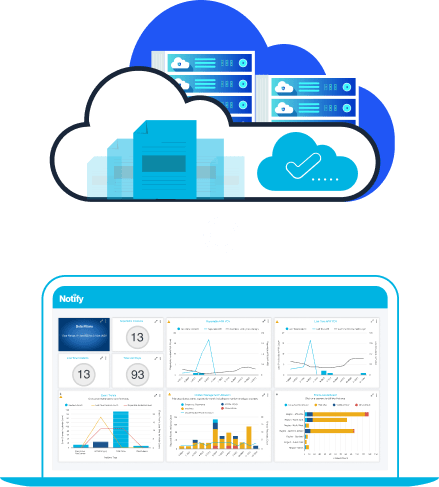With an estimated 36.8 million working days lost due to work-related illness and workplace injuries (HSE) it’s crucial for a safety professional to have a comprehensive understanding of those injuries and how to track them. One phrase you may encounter is a lost time injury (LTI) or lost time incident, which refers to an injury that is severe enough to result in an employee being unable to work for a period of time. In this blog post, we’ll explore what a lost time injury is, give examples of some common LTIs, explain how to manually calculate your lost time injury frequency rate, and discuss how auto calculation can be of benefit to you and your organisation.
What is a lost time injury?
A lost time injury (LTI) is a workplace incident or accident that results in an employee being unable to carry out their normal job duties for a period of time beyond the day of the injury. This means that the injury is serious enough to cause the employee to miss work for at least one working day or shift. As they can highlight the seriousness of occupational injuries, LTIs are frequently used as a standard metric for measuring workplace safety.
Examples of lost time injuries
LTIs can come in a variety of forms, but some of the most common LTIs to look out for are as follows:
- Broken bones: A fracture or break in a bone can be a serious injury that requires time off work to recover.
- Back ailments: Heavy lifting, repetitive motions and slips, trips, or falls, can result in back injuries. These types of injuries can be very uncomfortable and may result in a significant amount of time off work.
- Burns: Exposure to hot surfaces, chemicals, or flames can cause burns. They may be severe enough to necessitate hospitalisation and prolonged recuperation periods.
- Head injuries: Falls, collisions with machinery, and other occupational mishaps can cause head injuries.
- Sprains: Some of the most common workplace injuries are neck sprains, upper arm or shoulder sprains, all of which can result in a LTI.
How to calculate lost time injury frequency rate (LTIFR)
To calculate the lost time injury frequency rate (LTIFR), you’ll need to gather some information about your. Here’s how to do it:
Step 1: Determine the number of LTIs that have occurred during a specific time period. This could be a week, a month, or a year, depending upon the frequency of your KPI reporting.
Step 2: Determine the total number of hours worked by all employees during the same time period.
Step 3: Divide the number of LTIs by the total number of hours worked, and then multiply the result by 1,000,000. This will give you the LTIFR per million hours worked.
The LTIFR formula is: (number of LTIs / total hours worked) x 1,000,000
By tracking LTIs and calculating your LTIFR, you can identify trends and areas for improvement in your organisation’s safety programme. Remember, preventing LTIs should always be a top priority, as they can have a significant impact on employee well-being, as a well as your companies’ reputation.
Automate the tracking of lost time injuries
As highlighted previously in this blog, manually calculating your LTIFR can be a time-consuming task, and it places additional pressure on safety professionals to remember to update lost days for each incident.
Notify helps auto calculate your accident frequency rates for LTI and reportable incidents. Simply use our hours worked management feature to enter and track business working hours and our accident frequency rate dashboard will take care of the rest for you.
This enables you to:
- Save time: By automating the calculation of LTIs, you can save a significant amount of time that would otherwise be spent manually collecting and analysing data. This allows you to focus on other important aspects of your role.
- Increase the accuracy of your data: Manual calculations can lead to errors, which can impact the reliability of the data. Automated calculations can reduce the likelihood of human error and improve the consistency and accuracy of the results over time.
- Access real-time data: With automated calculations, you can view real-time data on LTIs, allowing you to quickly identify trends and areas for improvement. This can help you take proactive measures to prevent future injuries and improve workplace safety.
- Benchmark: Automated calculations can provide consistent and reliable data that can be used for benchmarking against industry standards. This can help you and your organisation identify best practices and areas for improvement.
- Seamlessly report: Timely reporting of LTIs is critical for compliance and regulatory purposes. Automating the calculation of LTIs can help ensure that reports are submitted on time and in compliance with the HSE regulations.
In conclusion, auto calculating lost time injuries can save time, increase the accuracy of data, facilitate benchmarking, and enable timely reporting. By leveraging technology to automate the calculation of LTIs, safety professionals can improve their efficiency, effectiveness, and overall ability to proactively prevent incidents in the workplace.
Request a free trial of our Incident Management module to see our LTI automation feature in action.






































































